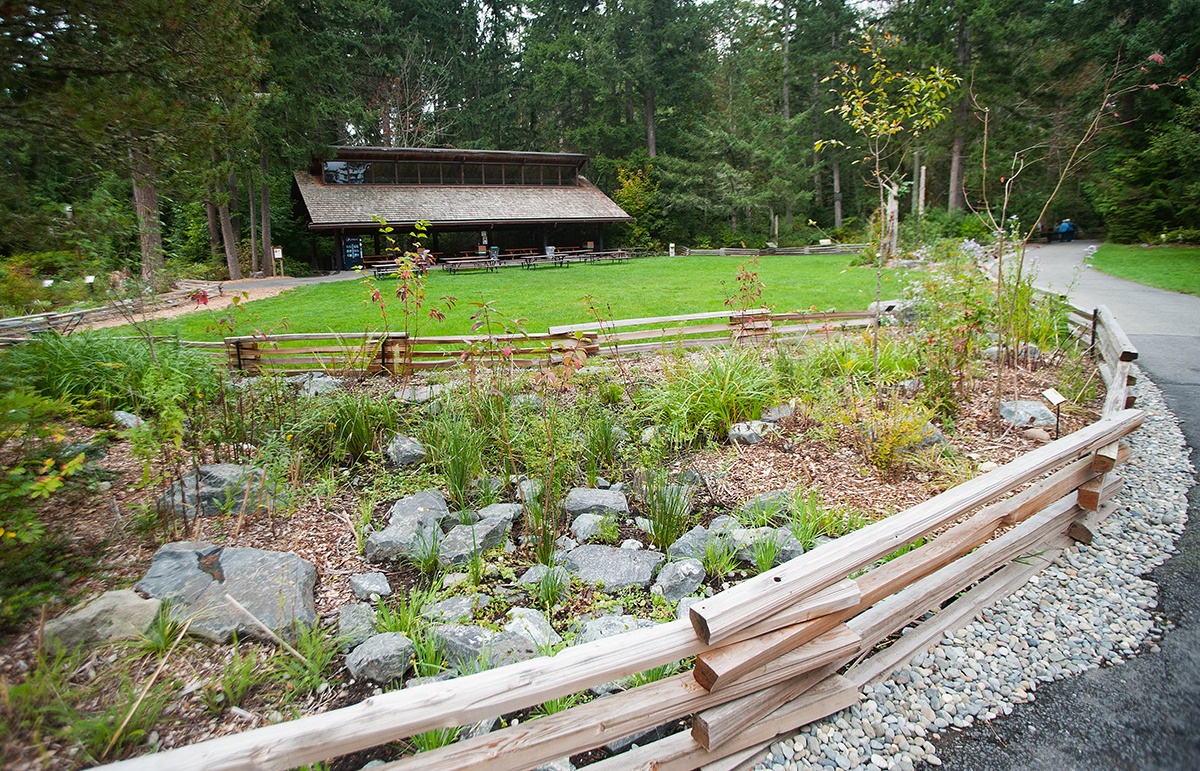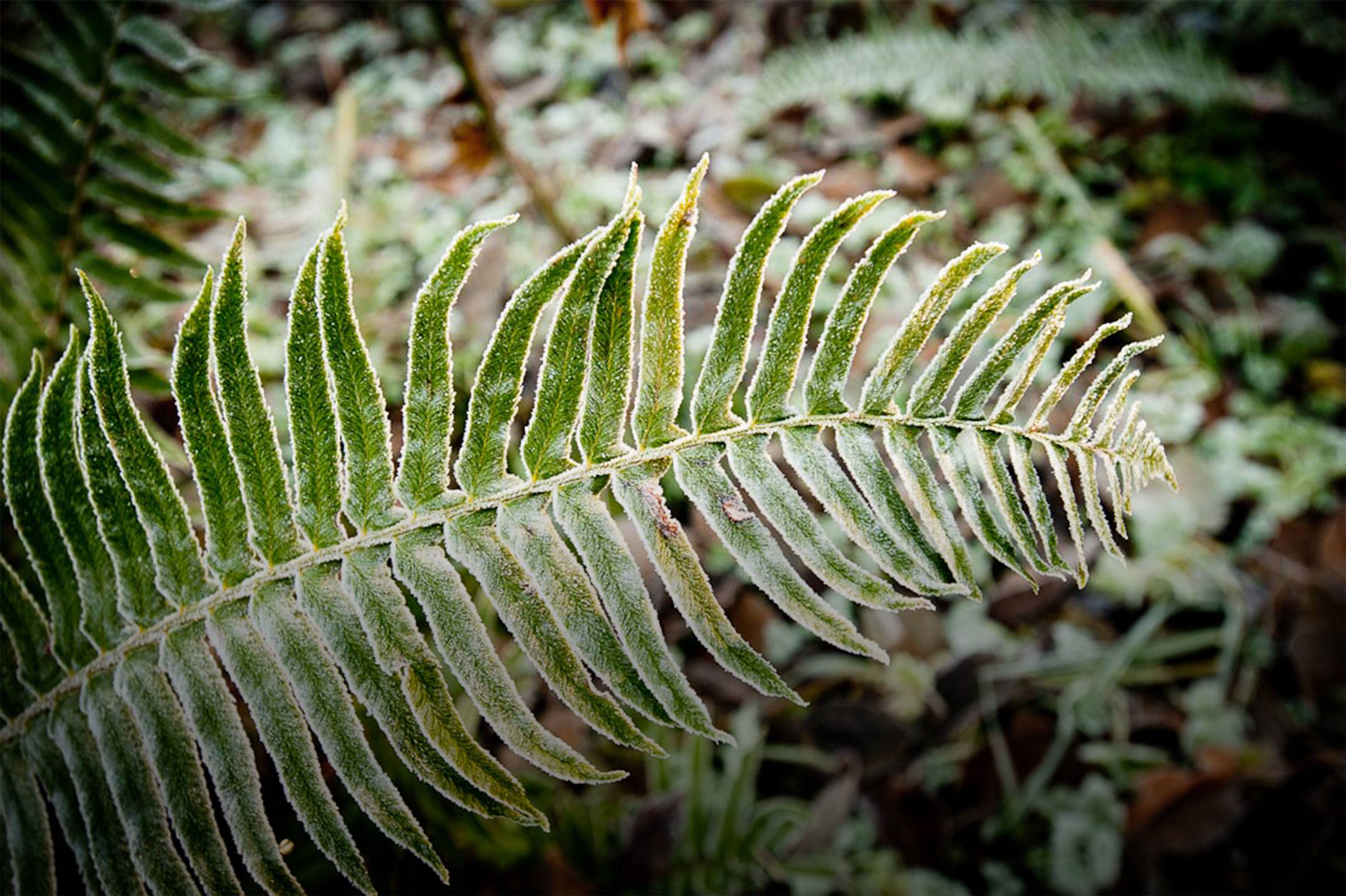Rain garden
Rain from roofs and driveways typically goes untreated into city pipes and local streams. Storm water can carry harmful water pollutants such as gas, grease, oil, pet waste, weed killers and fertilizers, which are unhealthy for fish and other wildlife and can be a danger to people, too.
Rain gardens have deep soils to absorb runoff before it reaches streets and storm drains. By absorbing storm water into your landscaping with a rain garden, you’ll help reduce pollution, recharge groundwater, reduce flooding potential, and improve wildlife habitat.

Visit Northwest Trek’s rain garden right inside the front entrance! It is made up of all native plants and functions as a rain garden, pollinator garden and wildlife resource.

Build your own rain garden in your backyard! Native plants are the most beneficial to pollinators and local wildlife. Choose plants for the basin of the rain garden that are tolerant of both drought and standing water. Sedges (Carex species) and rushes (Juncus species) work well for this portion. Plants chosen for the rim should be more drought tolerant.